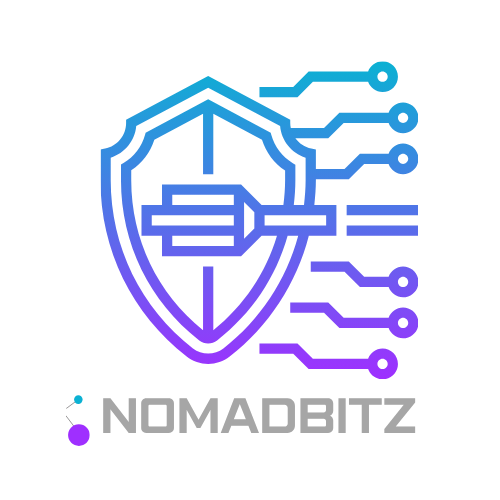Anúncios
Understanding tech design is essential in today’s digital landscape. As businesses increasingly rely on technology, design becomes a critical function in ensuring products meet user needs. This understanding helps create efficient, user-friendly interfaces.
Tech design encompasses various disciplines, including user interface (UI) and user experience (UX) design. These fields focus on maximizing user satisfaction through effective interaction. Thus, knowing the fundamentals can significantly impact your success in tech.
In this article, we will delve into the various aspects and stages of tech design. We aim to provide insights that will help readers navigate the complexities of this vital discipline successfully.
What is Tech Design?
Tech design refers to the process of creating digital products, integrating aesthetics with functionality. This combination aims to enhance usability while appealing visually. Effective tech design ultimately improves user engagement and satisfaction.
The process involves brainstorming, prototyping, and testing ideas. Designers collaborate with developers and stakeholders, ensuring products meet both user requirements and business goals. Maintaining focus throughout this process is essential for success.
Anúncios
Additionally, tech design encompasses tools and technologies that facilitate the design process. From wireframing software to prototyping tools, designers have access to various resources that streamline workflow. Mastery of these tools is crucial for efficiency.
Furthermore, tech design is influenced by evolving trends and user preferences. Staying updated on current trends ensures that designers create relevant and appealing products. As such, continuing education and research are essential components of a designer’s journey.
In conclusion, tech design plays a pivotal role in product development. Understanding its principles can lead to innovative solutions that resonate with users and meet business objectives efficiently.
Anúncios
The Design Process: An Overview
The design process is often nonlinear, involving iterative stages that refine ideas. It typically begins with research and user analysis, helping to identify user needs and preferences. This research guides the entire design journey.
Once defined, the concept moves to ideation, where various solutions are brainstormed. Designers sketch ideas and create low-fidelity prototypes to visualize concepts. This stage allows for experimentation and flexibility in developing ideas.
After ideation, a more structured approach is taken. High-fidelity prototypes are developed, showcasing finalized designs. These prototypes bring concepts to life, allowing stakeholders to visualize the final product, garnering valuable feedback.
Testing is a crucial phase, involving user feedback on prototypes. It highlights strengths and areas for improvement. Incorporating user insights helps refine the design further, ensuring it meets the target audience’s expectations.
Finally, developers collaborate with designers to bring the product to life. Iterating based on user feedback even during this stage further ensures the final product aligns with user expectations and business objectives.
Key Principles of Effective Tech Design
Understanding the principles of effective tech design is crucial for creating successful digital products. These principles include usability, accessibility, and aesthetics, each contributing significantly to user engagement.
Usability focuses on how easily users can navigate and interact with a product. A user-friendly interface minimizes friction and provides a seamless experience, leading to higher satisfaction rates. This principle must be prioritized in the design process.
Accessibility ensures that products can be used by individuals with various abilities and disabilities. Adhering to accessibility guidelines allows designers to create inclusive products, widening their audience and promoting brand loyalty.
Aesthetics play a significant role in users’ first impressions. A visually appealing design can capture users’ attention, encouraging them to explore further. It’s important to strike a balance between beauty and functionality.
Lastly, consistent branding across platforms strengthens a company’s identity. A comprehensive branding strategy enhances recognition and credibility, establishing trust with users. Effective design incorporates these branding elements seamlessly throughout the user experience.
The Role of User Experience (UX) Design
User experience (UX) design is a crucial element of tech design, focusing on creating a positive experience for users. This discipline integrates research, design, and psychology to shape user interactions effectively.
Understanding the user’s journey is essential. UX designers map out the entire experience, identifying pain points and opportunities to enhance satisfaction. This foresight helps create solutions that address users’ needs directly.
Additionally, UX design incorporates testing as a vital aspect of the design process. Techniques such as A/B testing and usability tests provide real-time feedback, allowing for data-driven design decisions. This iterative approach fosters continuous improvement.
Collaboration is another critical element of effective UX design. Designers work closely with developers, product managers, and marketing teams to align goals and objectives. This synergy ensures a cohesive approach to creating a product.
Ultimately, the goal of UX design is to create seamless interactions, cultivating user loyalty and satisfaction. Prioritizing the user experience directly impacts a product’s success in a competitive market.
The Importance of User Interface (UI) Design
User interface (UI) design complements UX, focusing on the visual elements users interact with. UI designers are responsible for ensuring that the interface is both functional and visually appealing. Their role is vital in maintaining user engagement.
Color theory is impactful in UI design, influencing emotions and brand perception. Carefully chosen color palettes can enhance usability, establishing a recognizable visual language. Alignment with brand guidelines is crucial for consistency and recall.
Typography is another significant aspect of UI design. Readable font choices improve comprehension, while style and hierarchy guide users through the interface efficiently. An effective typographic system enhances overall user experience.
Moreover, incorporating intuitive navigation structures is essential. Users expect clear pathways to access information, making it vital for UI designers to create straightforward navigation systems. An organized interface promotes user confidence and satisfaction.
Lastly, attention to detail is paramount in UI design. Fine-tuning elements like spacing, alignment, and responsiveness creates a polished product that users appreciate. Striving for excellence in detail can set a product apart from competitors.
Tools and Technologies in Tech Design
A range of tools and technologies facilitate tech design, assisting designers in bringing their ideas to life. Familiarity with these tools is essential for efficient workflows and high-quality outputs. Various software options cater to different design needs.
Wireframing tools, such as Sketch and Figma, enable designers to create low-fidelity representations of their ideas quickly. These tools help outline layouts and functionalities while encouraging collaboration and client feedback during the initial stages.
For prototyping, applications like InVision and Adobe XD allow designers to create interactive, high-fidelity mockups. These platforms enable comprehensive user testing, giving stakeholders a clear visualization of the final product.
When it comes to collaboration, tools such as Slack and Trello streamline communication among team members. These applications help manage projects effectively, ensuring all team members stay aligned with goals and deadlines.
Lastly, user testing platforms like UsabilityHub offer valuable insights by facilitating user feedback on designs. These essential tools empower designers to gather real-world interactions, fostering data-driven design improvements.
Conclusion
In summary, understanding tech design is essential for both aspiring and seasoned professionals. By grasping the foundations and best practices, designers can create user-focused products that stand out in the competitive market.
Tech design encompasses various stages, from research to implementation. Each phase requires careful consideration of user needs and business objectives. The balance of usability, accessibility, and aesthetics enhances user engagement.
Furthermore, effective UX and UI design play a significant role in shaping users’ experiences. Designers must leverage the right tools and technologies to streamline workflows and improve collaboration.
Ultimately, continuous growth and adaptation to evolving trends are crucial in the tech design landscape. By remaining informed and responsive to changes, designers can create innovations that resonate with users.
Embracing the principles of tech design will cultivate a fulfilling and successful career in the digital realm. Understanding this discipline opens up avenues for creating impactful products that enhance user satisfaction.



